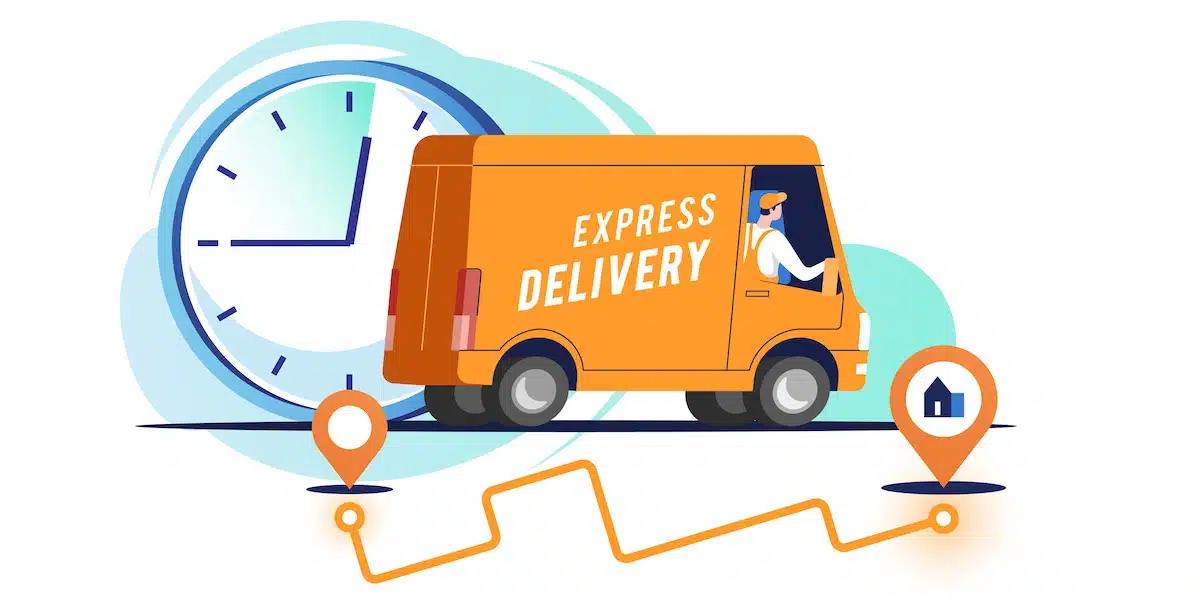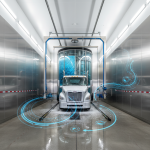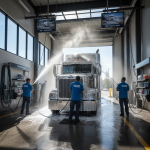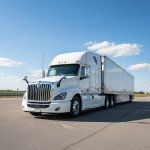A last mile delivery vehicle refers to a type of vehicle specifically designed for transporting goods and packages for the final leg of the delivery process, typically from a distribution center or hub to the customer’s doorstep or a nearby pickup location. The “last mile” refers to the final stage of delivery, which is often the most crucial and expensive part of the logistics chain.
Last mile delivery vehicles are optimized for efficiency, agility, and convenience in urban and suburban environments where frequent stops and shorter distances are common. These vehicles are designed to navigate through narrow streets, congested areas, and residential neighborhoods.
Here are some common types of last mile delivery vehicles:
- Delivery Vans: Delivery vans, such as those used by companies like Amazon, FedEx, UPS, and DHL, are one of the most common last mile delivery vehicles. They come in various sizes, from compact vans to larger sprinter vans, with enough cargo space to accommodate packages of different sizes.
- Electric Vehicles: With the increasing focus on sustainability and reducing carbon emissions, electric vehicles (EVs) are gaining popularity for last mile deliveries. Electric vans, trucks, and cargo bikes are being used by companies to provide emission-free delivery options.
- Cargo Bikes: Cargo bikes are human-powered or electric-assisted bicycles with cargo-carrying capabilities. They are particularly suitable for dense urban areas where traffic congestion and limited parking options make traditional delivery vehicles challenging. Cargo bikes are often used for smaller packages and provide an eco-friendly alternative for last mile deliveries.
- Trikes and Quads: Trikes and quads are three-wheeled or four-wheeled vehicles that combine elements of bicycles and small vehicles. They offer stability and increased cargo capacity compared to traditional bicycles and are commonly used for local deliveries in urban areas.
- Autonomous Vehicles: As technology advances, autonomous or self-driving vehicles are being explored for last mile deliveries. These vehicles have the potential to operate without human drivers, enhancing efficiency and reducing costs.
The choice of last mile delivery vehicle depends on various factors, including the nature of the goods being delivered, the delivery distance, the specific delivery environment, and the company’s operational requirements. Each vehicle type has its own advantages and considerations, balancing factors like cargo capacity, maneuverability, speed, cost, and environmental impact.
Should last mile delivery vehicles be kept clean
Yes, it is important to keep last mile delivery vehicles clean for several reasons:
- Professionalism and Brand Image: A clean and well-maintained last mile delivery vehicle reflects professionalism and can enhance the brand image of the delivery company. It creates a positive impression on customers and instills confidence in the quality of service being provided.
- Customer Satisfaction: Customers receiving packages from a clean and tidy vehicle are more likely to have a positive delivery experience. A clean vehicle demonstrates attention to detail and care, which can contribute to customer satisfaction and loyalty.
- Safety and Hygiene: Regular cleaning helps maintain a safe and hygienic environment inside the vehicle. A clean vehicle reduces the risk of slips and falls due to debris or
spills. It also helps prevent the buildup of dirt, dust, or allergens that could impact the health and well-being of drivers and customers. - Proper Functioning of Equipment: Dust, dirt, and debris can accumulate on vehicle components, such as sensors, cameras, or reflective surfaces, affecting their proper functioning. Keeping the vehicle clean ensures that all equipment operates optimally, improving safety and performance during deliveries.
- Vehicle Longevity: Regular cleaning and maintenance contribute to the longevity of the delivery vehicle. Removing dirt, road salt, or other contaminants helps prevent corrosion and damage to the vehicle’s exterior, prolonging its lifespan and reducing maintenance costs.
- Compliance with Regulations: In some regions, there may be regulations or guidelines that require delivery vehicles to be kept clean. Complying with these regulations helps ensure adherence to local standards and avoids potential penalties or citations.
To maintain cleanliness, delivery companies should establish regular vehicle cleaning schedules. This includes washing the exterior, cleaning the interior surfaces, vacuuming, and addressing any spills or stains promptly. Additionally, drivers should be encouraged to maintain cleanliness during their routes by properly disposing of waste and keeping the cargo area organized.




